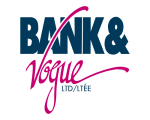1. Sourcing and Supply Chains
10 Years Ago:
Traditional sourcing: The wholesale secondhand market largely relied on local collection systems (charity donations, small scale thrift stores, municipal programs).
Local and regional focus: Wholesalers primarily sourced goods from local donations or nearby thrift stores, limiting reach and selection.
Manual processes: Sorting and grading were often manual, with less use of technology for quality control.
Nowadays:
Globalized supply chains: The rise of global logistics networks enables wholesalers to source secondhand goods from diverse regions across continents.
Digital platforms: Online platforms connect global suppliers and buyers, enabling businesses to access more diverse inventories and connect with suppliers around the world (e.g., online marketplaces like B2B platforms for bulk clothing).
Automation: Sorting and grading processes have become more automated, using AI, RFID tracking, and machine learning for quality control and inventory management.


- Sales Channels
- 10 Years Ago:
- Physical markets: Most wholesale secondhand businesses operated through physical warehouses, local auctions, and face-to-face negotiations with limited digital presence.
- Low online presence: E-commerce in secondhand wholesale was limited. Few wholesalers had websites, and transactions were handled mainly in person or over the phone.
- Nowadays:
- E-commerce and online platforms: The expansion of websites has transformed wholesale sales channels. Companies like Bank & Vogue operate through websites, online catalogs, and B2B e-commerce platforms.
- Social media integration: Platforms like Instagram, Facebook, and LinkedIn are now used to market wholesale secondhand goods, connect with retailers, and display inventories. Wholesalers often showcase sustainability and fashion trends to attract younger, eco-conscious buyers.


-
Buyer Preferences and Markets
- 10 Years Ago:
- Limited buyer demand for sustainability: Most buyers focused on price over sustainability. The environmental benefits of secondhand goods were a secondary consideration.
- Low demand for repurposing: Tailoring or upcycling secondhand items was a niche market, primarily targeting low-income consumers.
- Nowadays:
- Sustainability as a driving factor: Consumers and businesses are more conscious of environmental impacts, making sustainability a key selling point. Circular economy practices are now central to the value proposition of wholesale secondhand goods.
- Demand for upcycling and repurposing: Tailors, designers, and fashion brands are now creating business models around upcycling used clothing to cater to local tastes or trends. The rise of upcycling companies highlights the shift in how businesses approach the secondhand industry.
-
Technology and Data
- 10 Years Ago:
- Minimal use of technology: The wholesale secondhand goods business was largely analog, with minimal technology integration in sourcing, sorting, or logistics. Transactions were documented with paper records.
- Basic customer tracking: Customer data and sales records were stored locally, limiting analytics and business insights.
- Nowadays:
- Advanced data analytics: Wholesale businesses now use data analytics tools to predict trends, manage inventories, and optimize operations, allowing them to better serve retailers and bulk buyers.
-
-
Market Reach
- 10 Years Ago:
- Niche markets: Wholesale secondhand goods primarily targeted low-income regions and emerging markets with fewer established global networks.
- Limited collaborations: There were few collaborations between secondhand wholesalers and fashion brands or larger enterprises.
- Nowadays:
- Broader market appeal: Secondhand goods appeal to a wider range of consumers, from high-end fashion houses to eco-conscious retailers. Wholesalers now cater to a broader audience and have partnerships with mainstream brands.
- Cross-industry collaborations: There is a growing trend of collaborations between secondhand wholesalers and brands that seek to incorporate secondhand materials into their products or participate in circular economy initiatives.










